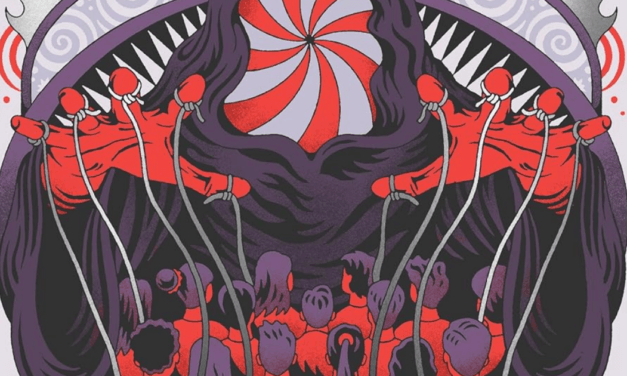When 12 bodies were dug up in early April near Matamoros, Mexico, law officials initially blamed the deaths on a satanic cult of drug smugglers. According to Cameron County (Texas) Sheriff’s Lt. George Gavito, cult members ritually sacrificed the victims and prayed to the devil “so the police would not arrest them, so bullets would not kill them and so they could make more money.”
By April 19 law officials found there had been more victims, placing the total suspected to have died at the hands of the sect at 15. Among them was Mark Kilroy, 21, a Texas premed student who vanished during his spring break in March.
Police arrested nine sect members in the case. The leader (or “godfather”) of the group, Adolfo de Jesus Constanzo, and his right-hand man killed themselves on May 6 as police were closing in on a Mexico City apartment where they were staying.
But in the wake of the arrests and intense media publicity, one thing became clear: members of the tightly-knit religious cult were not satanists in the traditional sense. Instead they were linked to Santeria, a strange mixture of Catholicism and an ancient African religion brought to the New World (mostly to the Caribbean) between the sixteenth and nineteenth centuries by slaves from the West African Yoruba tribe.
It also became clear that they were not Santerians in the traditional sense either. Although the sect did follow some traditional Santeria practices, and were even organized like a traditional Santeria group (having a “godfather” and a “godmother” at the top), they did not follow certain other Santeria practices.
Following the arrests, defensive Santeria priests (sometimes called santeros or espiritualistas) across the U.S. pointed out that their religion does not permit human sacrifice. And law officials and authorities on Santeria were quick to agree. Texas Attorney General Jim Mattox later said that although Santeria normally includes the practice of sacrificing chickens and goats, some of the Matamoros cult’s practices were styled by themselves. Santeria expert Dr. Mercedes Sandoval, professor of anthropology at Miami-Dade Community College, was quoted in the April 13 Miami Herald as saying: “These may have been a group of deranged people who may have started with Santeria and ended with these barbarities. What they did is not Santeria.
What many have come to ask in the days and weeks since the murders is, What is Santeria? Essentially, Santeria is a polytheistic occultic religion that has fused with elements of Catholicism, deifying certain Catholic saints along with Yoruban gods. A central “cleansing” ritual of Santerians is bloodletting through animal sacrifice, mostly of goats and chickens. Santeria is rapidly growing throughout the U.S., especially in urban areas with large Hispanic and Black populations.
Santeria (“the worship of saints” in Spanish) teaches that although the universe was created by one supreme God, the care of the world has been entrusted to many smaller gods, called orishas. The orishas are similar to the ancient Greek gods in that each represents a set of human behavioral characteristics along with a force of nature. When one is baptized into Santeria by his godfather or godmother, the godparent is designated a smaller god, and a close personal affinity is established between them. An orisha then becomes the Santerian’s guardian angel.
As Santeria grew in the New World certain Catholic saints were identified with orishas. Experts say the main reason slaves did this was to protect their African religion while appearing to be Catholic converts.
Santeria is loaded with occult ritual as believers pray for favors from the gods with chants, candles, fruit offerings, and animal sacrifices. Wherever Santeria has made its presence felt, botanicas — occult and voodoo supply shops — crop up. These stores sell various herbs and paraphernalia needed in Santeria rituals. Botanicas also sell statues of patron saints, along with candles to light in celebration of the birth of a baby, lottery candles with a secret number buried deep in the wax, and justice candles to pray for a lenient court sentence.
Santeria also has some “sister” traditions that are similar in many ways. The voodoo (or vodoun) religion is a mixture of Christianity and traditions from Dahomey (now the Republic of Benin), and Akan is a Yoruba-style African religion that is growing in black areas throughout America.
Donald Cosentino, a lecturer in African folklore and mythology at UCLA, was quoted in the February 7, 1988, Los Angeles Times as insisting Santeria “is not a cult.” It is “the local practice of a worldwide religion that has maybe 75 to 100 million followers,” he said. “It may function like a cult in L.A., but how can you call it a cult if it is the majority religion in Brazil, in Haiti, [and] in Cuba?”
What’s more, virtually all experts in Santeria say Americans are going to hear a lot more about it in the coming decades. Believers in large Hispanic areas are intent upon bringing this once semi-secret religion “out of the closet” so they can practice it more openly, said Hialeah (Florida) City Attorney William Wetzel in an August 15, 1987, Orlando Sentinel article. In Hialeah, which is in Dade County near Miami, Santerians have built a large church and have threatened legal action over the city’s refusal to allow them to sacrifice animals there. Authorities agree that the explosive growth of the religion in the U.S. started with the 1980 Mariel boatlift from Cuba when many santaros settled in the U.S.
Experts also say Santeria will continue to grow rapidly, due in part to the burgeoning Spanish population. According to the May 15, 1989, Christian Retailing magazine, the Hispanic population in the U.S. is expected to more than double from 1980 to the year 2000, from 14 to 30 million. Although experts say it’s difficult to estimate how many practice Santeria in the U.S., some have ventured a guess. (A difficulty they cite in coming up with figures is that while some people are serious followers, others merely dabble in its superstitious rituals.) There may be up to 250,000 in the Miami area, slightly less than that in New York, and “from 50,000 to 100,000” in Los Angeles, according to a February 7, 1988, article on Santeria in the Los Angeles Times. Other cities with large numbers of Santeria believers are Chicago, New Orleans, and Philadelphia.








